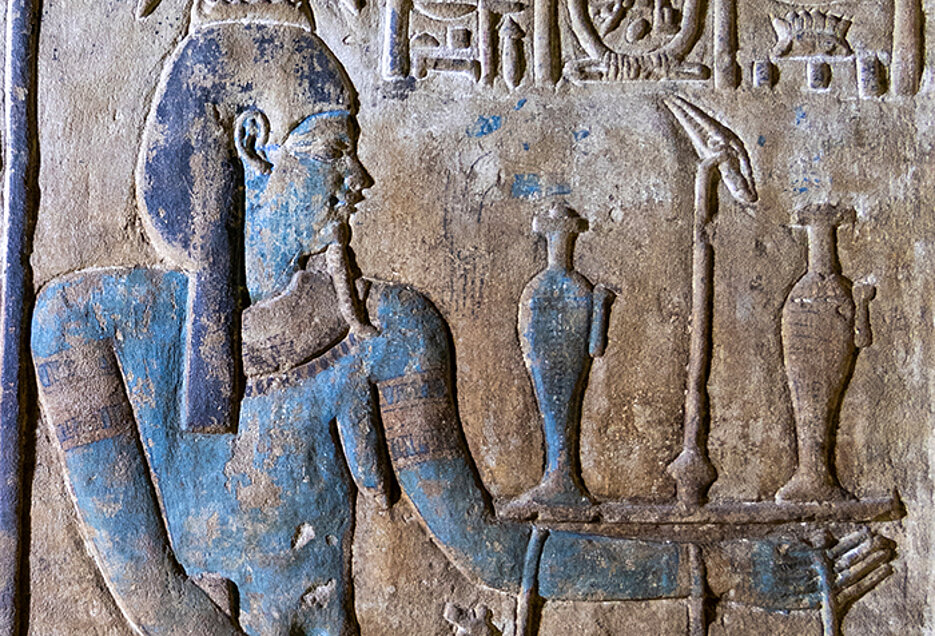Together with Egyptian conservators a team of the University of Würzburg has discovered traces of gold leaf, remnants of the colourful paintings and ancient graffiti in the temple of Edfu.

Egyptian temples were not only colourful but also gleamed in glistening gold. Columns, gates and obelisks had been covered in gold since the beginning of the Pharaonic Period. Researchers also know from textual sources that some of the buildings were gilded. In most cases, these were overlays of thicker metal foils made of gilded copper. Their traces can only be seen today as holes in the walls.
Thin gold leaf decorations, however, are only rarely documented due to their great fragility. At Edfu, particles of this type of gilding have now been discovered in numerous places on the higher wall areas of the barque sanctuary.
In cooperation with the Egyptian Ministry of Tourism and Antiquities, a team from Julius-Maximilians-Universität (JMU) Würzburg has been researching the formerly colourful paintwork of the stone reliefs in the temple of Edfu, which was dedicated to the falcon god Horus. The reliefs and paintings were cleaned and consolidated by an Egyptian team of conservators under the direction of Ahmed Abdel Naby. The work was financed by the Gerda Henkel Foundation.
"The gilding of the figures presumably not only served to symbolically immortalise and deify them but also contributed to the mystical aura of the room. It must have been very impressive, especially when the sunlight was shining in," says Dr Victoria Altmann-Wendling, project manager and research fellow in the Horus Beḥedety Project at JMU.
Painters Corrected Faulty Hieroglyphics
The Egyptian restorers removed dust, bird droppings and other deposits, such as soot, from the sandstone reliefs. In the process, the researchers uncovered the remains of the paintwork that once covered the entire reliefs. In most ancient Egyptian temples, painting is not preserved at all, or only in a few (interior) areas. The work in the temple's barque sanctuary was completed this spring. Further analyses of the pigments and the gilding are planned.






